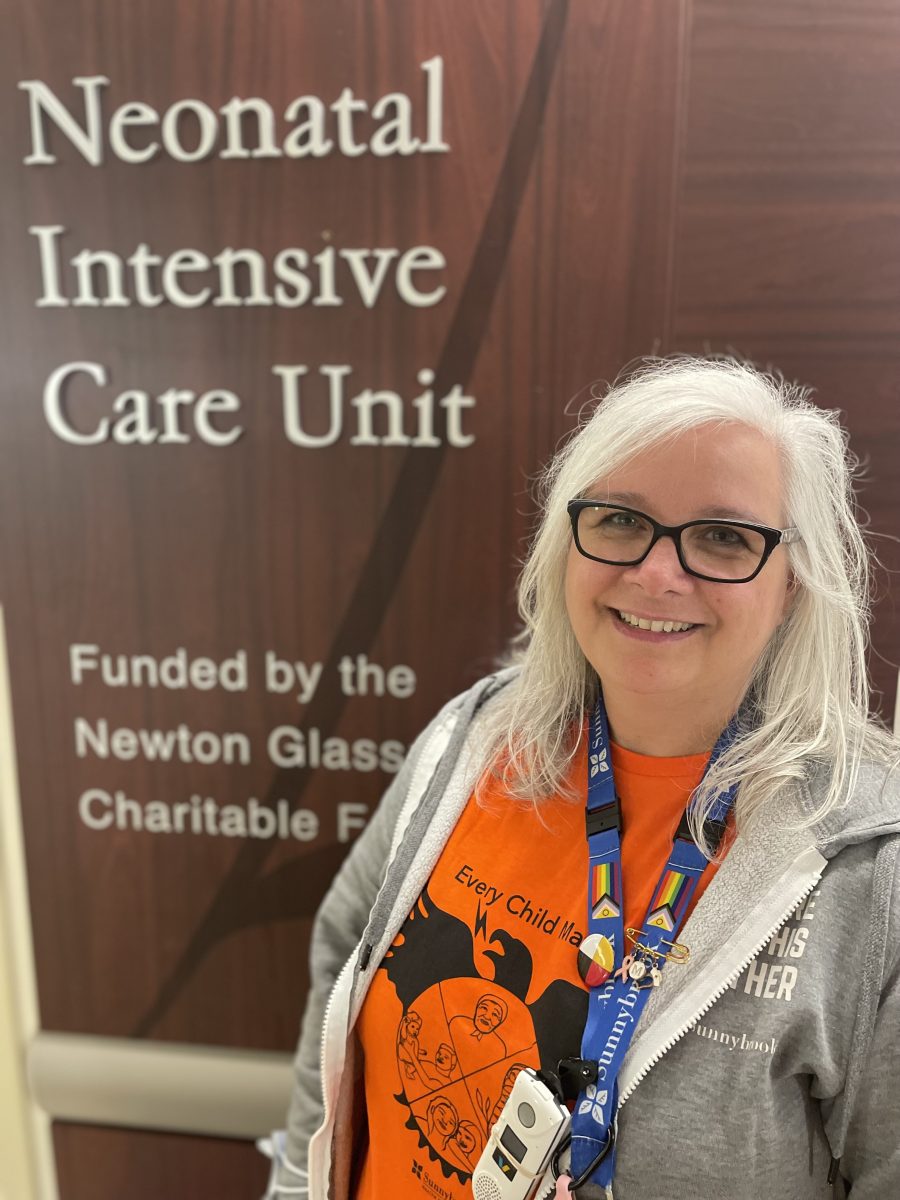As part of a new admissions initiative launched in the Fall of 2022, the Lawrence Bloomberg Faculty of Nursing welcomed the first graduate students to be admitted into the Master of Nursing and Post-master’s Nurse Practitioner Diploma through the Faculty’s Indigenous Priority Pathway.
The pathway reflects Bloomberg Nursing’s commitment to increasing the number of students who identify as First Nations (status, non-status, treaty, or non-treaty), Métis and Inuit in its graduate and undergraduate programs, as well as the importance of achieving greater representation and equitable access to leadership education for Indigenous nurses across the health care system.
“Our goal at Bloomberg Nursing, is to better reflect the diversity of the population that we, as health care providers, serve. It is also one of our top priorities to create inclusive and equitable pathways into health care for our Indigenous students at both the graduate and undergraduate level, supporting both the Truth and Reconciliation’s Commission’s Call to Action and the need for Indigenous leaders within the nursing profession,” says Linda Johnston, Dean of the Lawrence Bloomberg Faculty of Nursing.
Jenny Dwyer an incoming Master of Nursing student in the Health Systems, Leadership and Administration field (HSLA), had already considered applying to Bloomberg Nursing at U of T because of the program’s reputation, including among her colleagues at Sunnybrook Health Sciences Centre, but she also says that the Indigenous Priority Pathway admissions option offered a unique opportunity for her to understand the legacy and experience of Indigenous people, including exploring her own Indigenous heritage.
“My Indigeneity was hidden from me for much of my life,” says Dwyer.
“My maternal grandmother who was from the Sagamok First Nation, was stripped of her native status when she married my grandfather, and the anger and bitterness she felt as a result has meant that we are only recently learning about our Indigenous roots,” says Dwyer.
Although Dwyer describes her experience of her Indigenous heritage to be a bit different in comparison to others, with her having only begun to truly understand her family’s history over the past decade she believes the pathway is critically important in the health sciences, noting that it serves to recognize the contributions of Indigenous people to health care organizations, and gives them a path towards visibility in leadership.
For Sandy Robertson, a registered nurse in Timmins Ontario and a member of the Mattagami First Nation, the Post-Master’s Nurse Practitioner Diploma program (PMNP) at Bloomberg Nursing is an opportunity to advance her practice and become a nurse practitioner, enabling her to provide care more autonomously and be a leader in diabetes care management for her community.
While she knew she wanted to attend U of T because the PMNP program had great reviews, the introduction of the Indigenous Priority Pathway Robertson says, also provided both visibility and recognition for Indigenous applicants like herself within graduate programs.
“Being an Indigenous student, I am cognizant that I have opportunities now that others did not in the past, I take that seriously, and I feel honoured that I can represent the Indigenous community and my First Nation in this way, to be a voice for people who might not have these options,” says Robertson.
Both Dwyer and Robertson chose to pursue a graduate education in nursing because they see the potential for nurses to not only lead but to change the health care system for the better.
Dwyer’s mother was a nurse and so she saw firsthand how the role offered her mother an opportunity to have a rewarding career and also support her family. When Dwyer had her own children very young, she was undaunted by pursing her undergraduate degree in nursing, because she knew her mother’s resilience meant she could also succeed.
Now as a nurse mentor for new staff in the NICU, Dwyer has seen first-hand how her leadership role mentoring novice nurses, is part of a larger retention strategy and investment in the well-being of nurses in an organization.
“This kind of role Is where I want to extend my leadership skills, to see how this experience of being a mentor, can lead to other leadership roles in the future,” says Dwyer. “I’ve also seen how colleagues of mine who have complete the Master of Nursing HSLA program have gone on to do really interesting things with their career, and I want that for myself too.”
Robertson who also recently obtained certification as a Diabetes Educator, currently works in a family health team, where she handles everything from well-baby visits to anti-coagulation monitoring, to cervical screening, as well as the influx of diabetes in her community. She wants to eventually work in an NP-led clinic, given how she has seen her role in primary care evolve and grow with new opportunities.
In addition, for Robertson, who had a child in her teens, becoming a nurse was motivated by the great nursing care she received from primary care and public health nurses.
“They were an inspiration to me,” says Robertson. “I feel like Nurse Practitioners are the future of primary health care, and we can really make a difference in the health of our society especially now. I also hope that I have a chance to inspire that next generation of nurses to support people in their life.”
